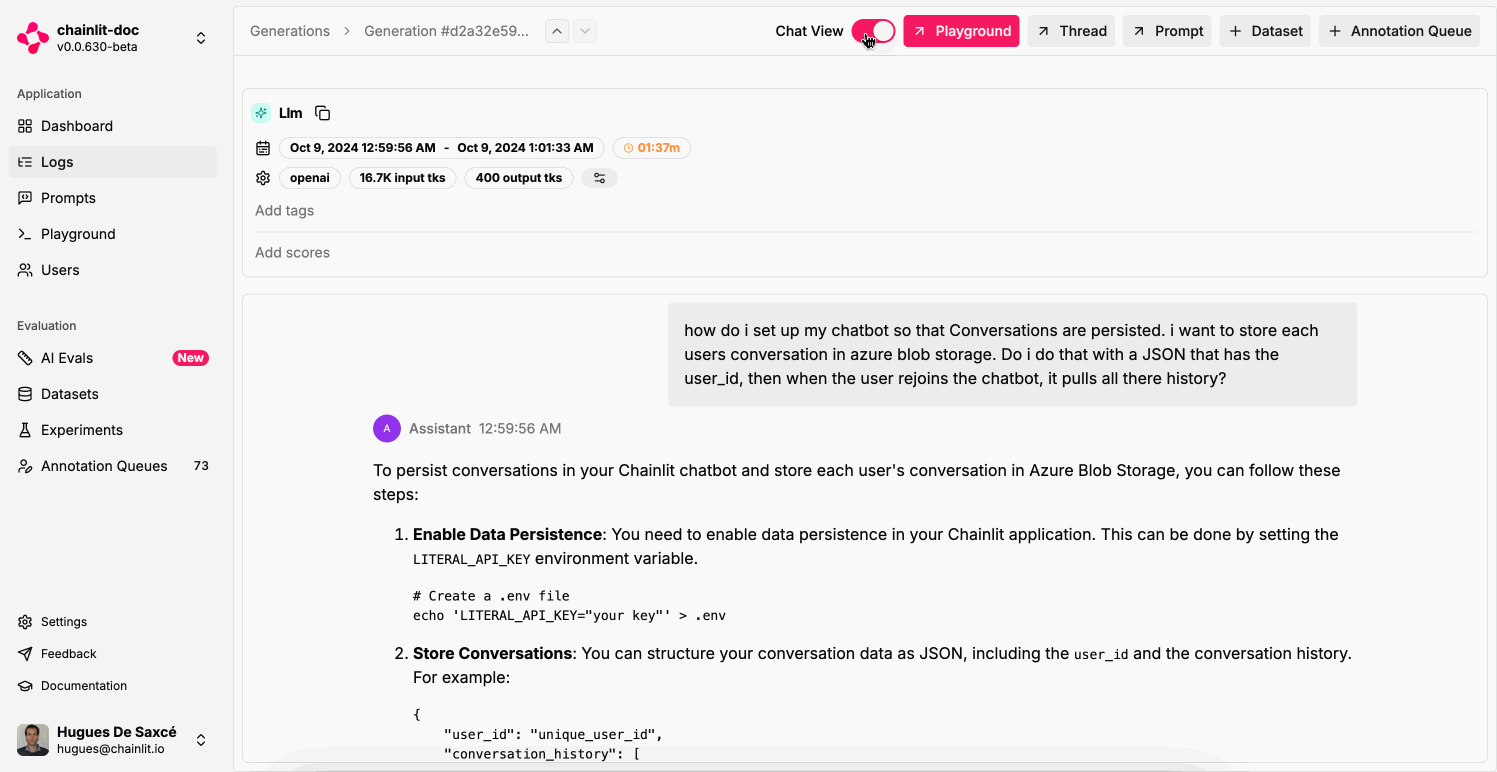input, expected output and can contain metadata. The input, expected output and metadata of the items in a dataset should follow the same schema.
Dataset Types
There are two types of datasets in Literal AI: Key-Value and Generation.Key-Value Datasets
Key-Value datasets can have any key-value pairs for input and expected output. This type of dataset can be used to for example store Runs of agents. An example of a Key-Value dataset item:Generation Datasets
Generation datasets are a type of dataset that follow the OpenAI message format. An example of a Generation Dataset Item:Create a Dataset
From File
You can upload a dataset on Literal AI from CSV (Key-Value datasets) or JSONL (Generation datasets). To do so, go to the Datasets page and click on the+ button to create a new dataset. Then drag and drop your file to upload it.
Uploading a Key-Value Dataset
From Code
You can also create aDataset and populate it with items programmatically using SDKs.
See installation to get your API key and instantiate SDKs
Dataset, we can create dataset items:
From existing logs
A benefit of managing your datasets and production logs in Literal AI is that you can continuously improve your app by using the logs to create new dataset items.
Create a Dataset Item from logs

